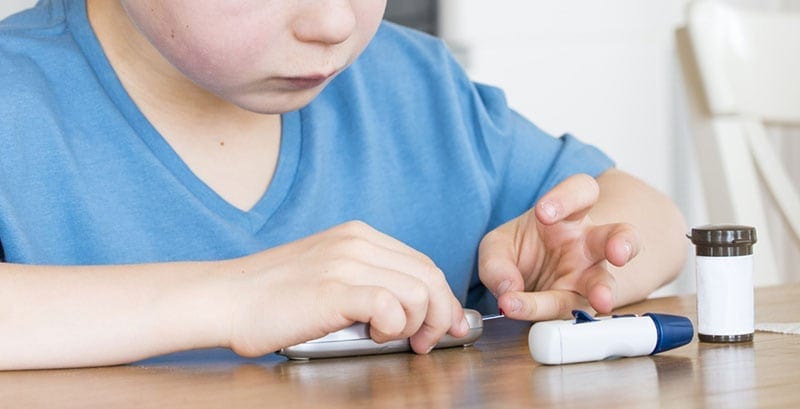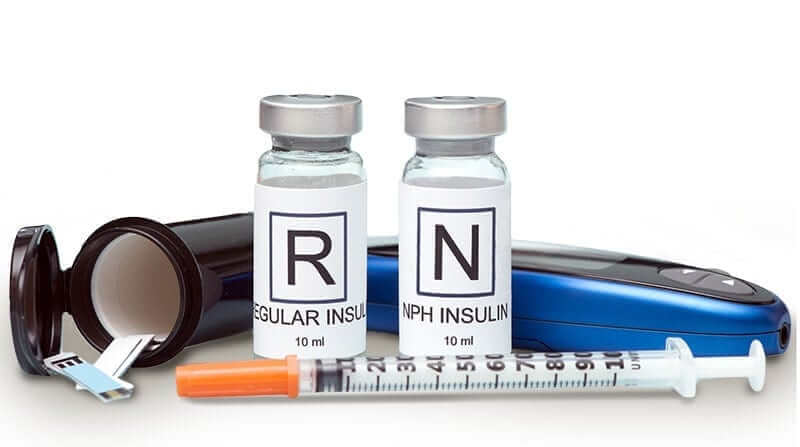I attended the 2nd Annual Type 1 Diabetes Conference in Naples, Florida earlier this month. The conference was created last year by the mother of a child who developed type 1 diabetes “to give back” to the local community. The number one purpose of the conference was to educate families about type 1 diabetes and raise money for an organization called “Help a Diabetic Child” (helpadiabeticchild.org) for those children who can’t afford their diabetes supplies/medications with or without health insurance.
I only counsel diabetes patients over age 18 so attending this meeting gave me a different perspective on treating and caring for children with diabetes. Seeing newly diagnosed and already diagnosed children interacting with their parents, volunteers and the speakers was gratifying. The desire for up-to-date information was huge and the connection between the attendees was extremely visible. Some of the young parents in the audience stated “they often feel like they failed their children since this disease has taken over all of their lives.” In their hearts they knew they did not cause the disease, but their heads wanted concrete answers as to why it happened.
I was impressed that most of the young adults listened as intently as their parents and the smaller children stayed seated and well behaved in order to let their parents focus on the information. There were many volunteers available to help out if the children needed to break away and since it was held at the YMCA there was a playground available. I wanted to share information about type 1 diabetes for those of you who are unfamiliar. Although called diabetes it is really quite different than type 2. Here is what you need to know:
What Exactly is Type 1 Diabetes?
Although type 1 diabetes can occur at any age, it is most common in infants to people in their late 30s. Only 5 % of the people with diabetes has type 1 and 95% have type 2 diabetes. In type 1 diabetes, the beta cells of the pancreas are destroyed and produce little and eventually no insulin. Insulin is a hormone needed to get glucose from broken down carbohydrates to the cells of the heart, brain and muscles of the body. There is a genetic component to type 1 which is then “triggered by an environmental factor.” Type 1 is an autoimmune disease. Autoimmune diseases attack the body’s own cells since they think of them as invaders and eventually destroys those cells. Currently, research is being done to figure out how autoimmune diseases originate. Some present theories for triggers include a possible virus or from hormonal changes. A peak time for type 1 diabetes to occur is during puberty since hormonal changes are extreme.
What are the Signs and Symptoms of Type 1 Diabetes?
The symptoms of type 1 diabetes are similar to type 2 but they tend to come on rapidly compared to those of type 2 which usually come on gradually. Each person may experience symptoms differently. The symptoms can include: extreme thirst and dry mouth, increased urination, drowsiness, fatigue or weakness, increased hunger, frequent infections of the skin, vagina or urinary tract or finding sugar in a urine sample. These added symptoms are more common in type 1 diabetes: sudden and unexplained weight loss, fruity breath or nausea, belly pain, tingling in the hands or feet, heavy breathing or becoming unconscious due to an extreme high blood sugar.
What is the Treatment for Type 1 Diabetes?
Since insulin is no longer being produced by the pancreas, then “exogenous” or outside insulin needs to be taken. Insulin can’t be taken in a pill form since saliva has an impact on the function of insulin. There are now over 20 kinds of insulin available and your physician will decide which one or combinations are needed for your individual care. Insulin should never be frozen or stored in extreme heat. It can be stored at room temperature once opened which will decrease the stinging sensation and help the absorption rate.
Some people with type 1 choose to take multiple injections a day using a vial and syringe and others prefer the ease of an insulin pen which also requires multiple injections. Cost is a factor since pens do cost more, especially if not covered by insurance. Other people with type 1 diabetes choose an insulin pump. A pump is pre-programmed to give certain amounts of insulin throughout the day called basal rates with an increase in the amounts prior to meals called bolus insulin. Insulin pumps also allow for correction doses when blood sugars go high or low. There are pumps with or without tubing and it is an individual preference of choice. Every insulin pump requires a new catheter to be placed under the skin and into the interstitial fluid approximately every 3 days.
People with type 1 diabetes are required to test their blood sugars 6-12 times a day using a home glucose meter. Your physician/endocrinologist along with the individual will decide what is best for that patient. They will teach you what blood sugar numbers are acceptable and when medication adjustments may be needed. Most blood sugar tests are performed before and 2 hours after a meal, before bedtime and before or after exercise. Illness (which can impact blood sugars greatly) also requires additional testing. Some people with type 1 will use a continuous glucose monitor-CGM. CGM does not replace regular glucose testing but can record a reading every 5 minutes and help with tracking blood sugar trends. Another test to follow with type 1 diabetes is the A1C blood test which tracks 3 month averages (the life span of a red blood cell) of blood sugars. Your physician will recommend what level is acceptable but most health care professionals still suggest 7% or lower unless there is unstable heart disease or in an elderly patient.
What Else is Required for Care When You Have Type 1 Diabetes?
As with type 2 diabetes, exercise is an important factor for control and improved health. People with type 1 diabetes should wear a medical ID for emergencies especially when exercising. They could walk daily for 30 minutes or step it up a notch and meet with an exercise trainer/CDE (Certified Diabetes Educator) who can make specific targeted recommendations. Any movement will help bring blood sugars down. A CDE can also help with suggestions about when to exercise based on your eating schedule, insulin dosages and blood sugar response. Each person will require an individualized plan. Always carry a fast-acting glucose source, such as glucose tablets or jelly beans, to prevent hypoglycemia. Exercise will not only lower blood sugar readings on most occasions but can help with heart health, blood pressure control, lung and bone health, as well as being a mood enhancer. Any movement is beneficial such as walking the dog, gardening, climbing steps, doing calisthenics, doing jumping jacks or jumping rope, interactive video games or going to a martial arts class all count as “movement”.
Do I Need an Eating Plan With Type 1 Diabetes?
Yes, as with type 2, a person with type 1 should meet with a registered dietitian/CDE for nutritional counseling. The focus should be on counting carbohydrates to work with insulin dosages and make overall wiser food choices. They will also discuss topics such as fiber, eating healthy fats, reading food labels, timing of meals, factoring in desserts/sweets, portion size and alcohol if dealing with an adult.
What About Stress Management and Type 1?
Does it apply to children as well? Stress management must be part of the overall plan to help with diabetes management since stress can raise blood sugars. Emotions are important as is feeling involved in your own care. Even small children need to feel confident and comfortable. Allow them to learn simple tasks to feel like they are a major part of their own care. There is always an adjustment period after diagnosis of diabetes but if coping becomes a long-term issue for you and your child which influences daily life, consider meeting with a therapist to help you learn how to better balance things.
What About Children With Type 1 Diabetes and School?
The school administrative staff, parents, teachers, school nurse, physical education teacher and the student should work together on a viable plan. Emergency supplies such as glucagon for low blood sugars when the child is unconscious or unable to swallow should be available at the school. There are both federal and state laws that protect students with diabetes from discrimination. DRI (Diabetes Research Institute) offers a brochure called “Diabetes at school” along with many other wonderful resources giving tips about school and diabetes.
Where Is a Great Place to Find Credible, Reliable Information for Me and My Child With Type 1 Diabetes?
JDRF (Juvenile Diabetes Research Foundation) is a global organization working for and focused on type 1 diabetes. Since the founding in 1970 “JDRF has awarded more than 1.6 billion to diabetes research.” Visit www.JDRF.org to find out how they may help you and your child. JDRF goals are to “cure, treat and prevent type 1 diabetes.” Take advantage of this amazing organization and all they have to offer.
What are Possible Complications of Type 1 Diabetes?

Can I Trust Smartphone Apps When I Have Type1 Diabetes?
There are multiple reliable diabetes Apps to help you better organize your diabetes management. There are food Apps like Go Meals, Carb Finder, and Food Scanner. There are exercise Apps such as on Track, Lose It, and My Fitness Pal. There are even blood glucose and insulin calculation Apps like WaveSense, Glucose Buddy and Diabetes Log. Some Apps are specific for IPhones and some are for Android devices but most every device offers high quality Apps to help you manage diabetes. Pull up diabetes Apps online and you will find many additional ones listed.
What is the Pep Squad?
The Pep Squad is a “group of moms, dads, grandparents and others who share similar situations and concerns about their child’s type 1 diabetes as your family does. It does not matter if your child is newly diagnosed, having difficulty adjusting to type 1 diabetes, entering a new stage of life or just want to bond with other families who are dealing with diabetes, Pep Squad may be a wonderful support system for you. It is offered through Diabetes Research Institute. There are e newsletters available as well as Facebook interaction which may what you and your child need.
Do I need a diabetes management team with type 1 diabetes?
Yes, a team of specialists including a pediatric endocrinologist or endocrinologist for a young adult along with a CDE for complete education is a good place to start. You may need to include a registered dietitian, a psychologist and a pump trainer if you and your child decide that is the right device for you. Diabetes management classes offer knowledge and increase confidence which is something that is often needed after diagnosis. A team effort can assist with daily decisions and challenges people face with type 1 diabetes.
It is important to know the fundamentals of diabetes and how it may apply to you and your family. There is not one day that goes by where diabetes doesn’t touch somebody’s life. Get involved in any way you can!
Have a question or comment? Post below or email me at RKleinman@adwdiabetes.com if you would like to share them with ADW diabetes.
NOTE: Consult your Doctor first to make sure my recommendations fit your special health needs.








I just found this article, and it’s so nice to read about Type 1s instead of Type 2s — I hadn’t realized we’re only 5% of the diabetic populations, so it makes sense that most materials are for Type 2s, but seeing something about the rest of us is lovely!